Daily advices
#MASKNE Spots under your mask? Here’s some help!
Acne is one of the main consequences of wearing a mask for long periods of time. Here's a few ideas on how to beat ‘maskne’ and restore your skin health.
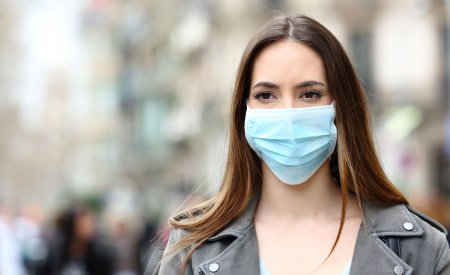
Daily advices
Acne is one of the main consequences of wearing a mask for long periods of time. Here's a few ideas on how to beat ‘maskne’ and restore your skin health.
There are now millions of us around the world who wear a mask everyday to prevent the spreading of Covid-19. This is a good thing, and we must continue doing it.
But many of us have also noticed that there are consequences to wearing a mask for long periods of time. Second after irritations, blemishes located on the lower half of the face are among the side effects of wearing a surgical or fabric mask. Healthcare professionals are familiar with the problem – and now we’re all experiencing it! Amidst this global pandemic, a new word has been invented to describe acne resulting from wearing a mask: maskne.
If you have acne-prone skin, you are unfortunately the perfect target. Maskne doesn’t reserve its visits just for you, however. Even those of us who don’t usually have trouble with spots are affected.
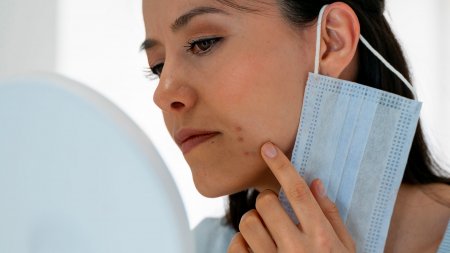
What does maskne look like? Different studies in China and Italy after May 2020 on healthcare professionals make it possible to describe precisely the blemishes that appear as a result of wearing a mask.
It is mostly occlusion acne, with papules, pustules and microcomedones that are located on the chin and symmetrically along the jaw. A typical outbreak, in other words, which shouldn’t be confused with other skin problems that can also be caused by wearing a mask.
As for maskne, there is a greater risk with oily skin of seborrhoea worsening. And generally speaking, acne will affect skin that is already prone to acne. Finally, wearing a mask can also aggravate other dermatological problems such as rosacea and seborrhoeic dermatitis.
Throughout the world, several scientific experts have analysed what happens to skin when it’s covered by a mask several hours a day. The changes depend on how long a mask is worn.
These are the perfect conditions for new blemishes to appear! By protecting our health, masks also have a negative impact on our skin as our skin often doesn’t get enough air and feels choked under the fabric or surgical paper. In this enclosed and humid environment, skin becomes oily, blackheads multiply and if bacteria arrives, spots appear.
Maskne can most likely be explained by keeping fabric close to the skin, occluding areas that have numerous sebaceous glands, like the nose and chin. Skin is kept inside a warm and humid environment, which helps blemishes to break out.
Michèle Sayag, Allergist
Maskne affects fragile skin first: sensitive, reactive skin that is often irritated, and especially acne-prone skin.
If you don’t have any particular skin problems, maskne is a lesser threat, but still present. You can see that your skin is oilier and has more blackheads or small spots that weren’t there before. It all depends on how long you wear a mask everyday.
Can a mask cause acne? A Chinese study showed a significant increase in acne breakouts among people who wear a mask for more than four hours every day for over two months. Sebum production can rise by as much as 10 %.
Hygiene and care that prevent and treat are the main solutions for maskne. Don’t hesitate to change your routine before problems arrive, with well chosen maskne products.
Use a gentle yet effective cleanser both morning and night. Using a micellar water or foaming gel with a pH similar to that of the skin won’t strip it. Micellar water makes it possible to eliminate all residue accumulated under the mask during the day, while respecting the skin’s barrier function and natural balance. Choose one that doesn’t require rinsing, formulated specifically for oily, sensitive skin.
Wearing a mask can make us feel like pollution is getting even deeper under our skin. It feels like the CO2 we naturally exhale is blocked by the mask. Micellar water eliminates not only perspiration and excess sebum but also all kinds of air pollutants.
To prevent and treat maskne, it’s important to find the balance between a product that can moisturise skin to preserve its barrier properly while also preventing blemishes. Indeed, even skin with blemishes can suffer from irritation. A daily cream for skin must also be soothing and moisturising, not too rich and especially not comedogenic. There’s no need to help a breakout come out!
For hygiene and care, Bioderma’s Sébium range is ideal for preventing maskne and treating its effects.

1. Wash your hands regularly (yes, still!), and systematically before touching your face.
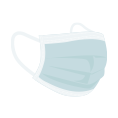
2. Wash your fabric mask at least once a day with a gentle detergent, and rinse well to remove all traces of it. If you use disposable masks, renew them regularly (every four hours).

3. Let your skin breathe without a mask when you are alone in a room or in your car.
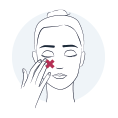
4. Leave your blemishes alone, even if they’re hidden under your mask. You may have scarring that will be visible after the pandemic is over.
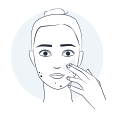
5. Apply your moisturiser at least 30 minutes before putting your mask on so that it has time to penetrate into your skin.
It’s difficult to say which type of mask is better for avoiding maskne. It depends on various factors such as the type of fabric, its softness, how much it breathes. Test different types of fabric masks and compare them with disposable masks to see which is better for you. Don’t hesitate to try each mask over a few days to evaluate both comfort and the effect on your skin.